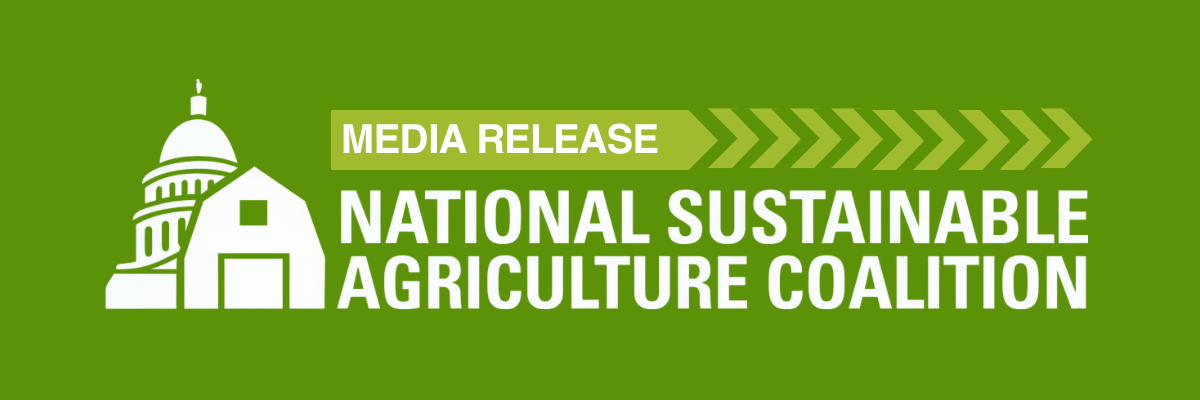What changes to SNAP mean for Nebraskans’ food security and state costs – Omaha World-Herald

Report on the Impact of Federal SNAP Reductions on Nebraska’s Progress Towards Sustainable Development Goals
Introduction: Legislative Changes and SDG Implications
Recent federal legislative actions, specifically the “One Big Beautiful Bill,” are poised to enact significant cuts to the Supplemental Nutrition Assistance Program (SNAP), creating substantial challenges for the State of Nebraska. These changes directly threaten the state’s progress toward several key Sustainable Development Goals (SDGs), most notably SDG 1 (No Poverty), SDG 2 (Zero Hunger), and SDG 10 (Reduced Inequalities). State lawmakers have expressed concern over the potential for an unfunded mandate as Nebraska faces a projected budget deficit of $95 million, complicating its ability to absorb federally shifted costs and maintain essential social safety nets.
State Financial Burden and a Setback for SDG 1 (No Poverty)
The federal bill introduces a fundamental shift in the funding structure of SNAP, transferring a greater financial responsibility to the states. This policy change risks increasing poverty by straining state resources and potentially forcing cuts to a program designed to alleviate economic hardship. This directly conflicts with the objectives of SDG 1.
- Federal Funding Cut: The Congressional Budget Office estimates a federal funding reduction of $186 billion through 2034, representing a 20% cut to the program.
- Administrative Cost Shift: Beginning in fiscal year 2026, Nebraska’s share of administrative costs will increase from 50% to 75%, an estimated new expense of up to $13 million.
- Benefit Cost Share: For the first time, states will be required to cover a portion of the actual food benefits, contingent on their payment error rates.
Nebraska’s financial liability for benefit costs will be determined by its performance, creating significant fiscal uncertainty. The state’s error rate was 5.5% in 2024 and over 7% in 2023. Based on 2024 benefit distribution of $332 million, the potential new costs are substantial:
- A 5% share (for error rates below 6%) would cost Nebraska $16.6 million.
- A 15% share (for error rates exceeding 6%) would cost Nebraska $49.8 million.
This cost-sharing mechanism could force the state to choose between allocating new funds or reducing program accessibility, thereby hindering progress on poverty reduction.
Escalating Food Insecurity and the Challenge to SDG 2 (Zero Hunger)
The proposed changes to SNAP arrive as Nebraska faces heightened levels of food insecurity, making the achievement of SDG 2 (Zero Hunger) more difficult. The state’s charitable food system is already operating beyond its capacity.
- Current Need: Approximately 259,000 Nebraskans, or one in seven residents, are considered food insecure. This level of need is reported to be higher than the peak of the COVID-19 pandemic.
- SNAP Reach: The program currently serves 155,000 Nebraskans, acting as a critical first line of defense against hunger.
- System Strain: Food Bank for the Heartland warns that any reduction in SNAP benefits will place an “undue burden on an already overwhelmed pantry system,” directly impeding efforts to ensure all citizens have access to sufficient and nutritious food.
Barriers to Access and Impact on Vulnerable Populations (SDG 3, 5, & 10)
The federal bill imposes stricter administrative and work requirements, which threatens to reduce access for vulnerable populations and widen disparities, undermining SDG 10 (Reduced Inequalities), SDG 5 (Gender Equality), and SDG 3 (Good Health and Well-being).
The new requirements include:
- Expanding work/volunteer mandates to adults aged 55-64 and to parents with children 14 and older.
- Eliminating exemptions for veterans and for former foster youth aged 18-24.
These administrative hurdles can cause eligible individuals to lose benefits. The case of Kendra Whittle, a single mother who fled domestic violence, exemplifies the program’s critical role in supporting multiple SDGs. For her, SNAP was essential to achieving stability, health, and educational goals that would have otherwise been unattainable.
- SDG 5 (Gender Equality): SNAP provided the support necessary for Whittle to escape a violent situation and pursue independence.
- SDG 3 (Good Health and Well-being): The program, along with Medicaid, ensured she and her son remained fed and healthy.
- SDG 10 (Reduced Inequalities): SNAP serves as a temporary support system, with the average recipient using it for nine months to navigate crises. It primarily benefits the most vulnerable, including children, seniors, and people with disabilities.
SNAP’s Role in Promoting SDG 4 (Quality Education) and SDG 8 (Decent Work)
SNAP functions as a foundational support that enables recipients to pursue long-term self-sufficiency, contributing to SDG 4 (Quality Education) and SDG 8 (Decent Work and Economic Growth). Whittle stated, “I could not have gone to school without SNAP,” ultimately completing a doctorate program to become an occupational therapist. Her story demonstrates that SNAP is not a dependency but an investment that allows individuals to gain education and enter skilled professions, thereby contributing back to the state’s economy and healthcare system. By providing a temporary “hand up,” the program helps people overcome crises and achieve economic stability, which is the core principle of decent work and sustainable economic growth.
Analysis of Sustainable Development Goals in the Article
1. Which SDGs are addressed or connected to the issues highlighted in the article?
The article discusses issues related to food security, poverty, and social assistance programs, which directly and indirectly connect to several Sustainable Development Goals (SDGs). The primary goals identified are:
- SDG 1: No Poverty – The article focuses on the Supplemental Nutrition Assistance Program (SNAP), a social safety net designed to assist low-income individuals and families, helping them to avoid or escape poverty.
- SDG 2: Zero Hunger – This is the most central SDG, as the article’s main topic is food security and the role of SNAP in providing access to food for vulnerable populations in Nebraska.
- SDG 3: Good Health and Well-being – The article links access to food through SNAP with health outcomes, noting that the program kept a recipient and her son “fed and healthy” and helps in “mitigating larger health issues.”
- SDG 4: Quality Education – A personal story in the article highlights how SNAP benefits enabled a single mother to complete her doctorate, demonstrating the link between social support and educational attainment.
- SDG 10: Reduced Inequalities – The article addresses the challenges faced by vulnerable groups, including low-income families, children, seniors, and people with disabilities, and how policy changes could exacerbate inequalities.
- SDG 16: Peace, Justice and Strong Institutions – The discussion revolves around government policy, legislative debates, federal and state budgets, and the administrative effectiveness of institutions responsible for implementing SNAP.
2. What specific targets under those SDGs can be identified based on the article’s content?
Based on the article’s content, the following specific SDG targets can be identified:
-
SDG 1: No Poverty
- Target 1.3: Implement nationally appropriate social protection systems and measures for all, including floors, and by 2030 achieve substantial coverage of the poor and the vulnerable. The article is entirely focused on SNAP, which is a key social protection system in the United States. The debate over funding cuts and eligibility directly impacts the coverage and robustness of this system for the poor and vulnerable in Nebraska.
-
SDG 2: Zero Hunger
- Target 2.1: By 2030, end hunger and ensure access by all people, in particular the poor and people in vulnerable situations, including infants, to safe, nutritious and sufficient food all year round. The article explicitly discusses “food security” and the number of “food insecure” Nebraskans. It highlights SNAP as a primary mechanism for ensuring year-round access to food for about 155,000 residents, including the story of a mother and her young son who relied on it.
-
SDG 3: Good Health and Well-being
- The article supports the overall goal of ensuring healthy lives. The personal testimony from Kendra Whittle that SNAP, along with Medicaid, “kept her and Luka fed and healthy” and the coalition letter stating that SNAP helps in “mitigating larger health issues” connect directly to the foundational aspects of this goal.
-
SDG 4: Quality Education
- Target 4.3: By 2030, ensure equal access for all women and men to affordable and quality technical, vocational and tertiary education, including university. The story of Kendra Whittle, who stated, “I could not have gone to school without SNAP,” and was able to “complete a doctorate program” because of the support, directly illustrates how social protection systems can remove barriers to higher education for vulnerable individuals.
-
SDG 10: Reduced Inequalities
- Target 10.2: By 2030, empower and promote the social, economic and political inclusion of all, irrespective of age, sex, disability, race, ethnicity, origin, religion or economic or other status. The article mentions that long-term SNAP recipients are “mostly seniors, people with disabilities and kids,” highlighting the program’s role in supporting vulnerable and often marginalized groups.
- Target 10.4: Adopt policies, especially fiscal, wage and social protection policies, and progressively achieve greater equality. The entire article is a case study of this target, analyzing the fiscal and social protection policies at both federal and state levels and their potential impact on equality and the well-being of low-income populations.
-
SDG 16: Peace, Justice and Strong Institutions
- Target 16.6: Develop effective, accountable and transparent institutions at all levels. The article discusses the accountability and effectiveness of the institutions managing SNAP through the “error rates, which track overpayments and underpayments.” The debate over cost-sharing between federal and state governments based on these rates is a direct reflection of this target.
3. Are there any indicators mentioned or implied in the article that can be used to measure progress towards the identified targets?
Yes, the article contains several quantitative and qualitative indicators that can be used to measure progress:
- Prevalence of food insecurity (Indicator 2.1.2): The article states that “about 259,000 Nebraskans, roughly one of every seven, are considered food insecure.” This is a direct measure of the scale of hunger.
- Proportion of population covered by social protection systems (Indicator 1.3.1): The article provides the number of SNAP recipients (“about 155,000 Nebraskans”) and the percentage of the population they represent (“a little less than 8% of the state’s population”). Changes in this number would indicate a change in coverage.
- Government spending on social protection programs: The article mentions specific financial figures that serve as indicators of government commitment and policy changes. These include:
- The proposed federal funding cut of “$186 billion through 2034.”
- The total value of SNAP benefits in Nebraska in 2024: “about $332 million.”
- The expected increase in state administrative costs: “up to $13 million.”
- The potential state share of benefit costs: “5% of that total is $16.6 million, and 15% is $49.8 million.”
- Administrative efficiency of institutions: The “error rate” for SNAP payments is a key performance indicator for institutional effectiveness (Target 16.6). The article provides specific figures for Nebraska: “5.5%” in 2024 and “just over 7%” in 2023.
- Impact on educational attainment: While not a standard UN indicator, the story of Kendra Whittle completing her doctorate serves as a powerful qualitative indicator of how social protection programs can contribute to educational outcomes (Target 4.3).
4. Table of SDGs, Targets, and Indicators
| SDGs | Targets | Indicators Identified in the Article |
|---|---|---|
| SDG 1: No Poverty | 1.3: Implement nationally appropriate social protection systems and measures for all. |
|
| SDG 2: Zero Hunger | 2.1: End hunger and ensure access by all people to safe, nutritious and sufficient food. |
|
| SDG 3: Good Health and Well-being | Ensure healthy lives and promote well-being for all at all ages. |
|
| SDG 4: Quality Education | 4.3: Ensure equal access for all to affordable and quality tertiary education. |
|
| SDG 10: Reduced Inequalities | 10.2 & 10.4: Promote inclusion and adopt social protection policies to achieve equality. |
|
| SDG 16: Peace, Justice and Strong Institutions | 16.6: Develop effective, accountable and transparent institutions. |
|
Source: omaha.com

What is Your Reaction?
 Like
0
Like
0
 Dislike
0
Dislike
0
 Love
0
Love
0
 Funny
0
Funny
0
 Angry
0
Angry
0
 Sad
0
Sad
0
 Wow
0
Wow
0









































































